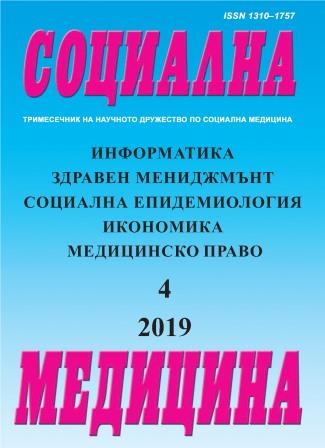Хранене и алергии при кърмачетата
Infant nutrition and allergy
Author(s): Darina Naydenova, Vanya Nedkova-Milanova, Mariyana Stoynovska, Milena KarchevaSubject(s): Social Sciences, Sociology, Health and medicine and law, Family and social welfare
Published by: Издателство на Медицински университет “Проф. д-р П. Стоянов“ - Варна
Keywords: food allergy; cow’s milk allergy; breastfeeding
Summary/Abstract: The correct nutrition in the first year of a child’s life is an important factor determining the physical and intellectual capabilities of a person at a later age and has an important meaning to the risk of developing a food allergy. The aim of our study was to determine whether breastfeeding practices, including exceptional breastfeeding, and using hydrolysed milk alter the risk of developing a food allergy in infants. Material and Methods: We tracked 180 healthy infants up to the age of one year old and 94 – with manifestations of allergy. The statistical processing and visualisation of the results were done with the products Statgraphics Plus and Microsoft Excel. Results: The success of breastfeeding in the monitored mothers in terms of duration of breastfeeding was influenced by the level of education, ethnicity and current place of residence. In normal birth and caesarean delivery, healthy children are breastfed over 7 months of age, while children with manifestations of allergy – up to 1-2 months of age. Among the monitored by us children food allergy was seen more frequently in infants with low birth weight. More commonly during the first year we observed skin-gastrointestinal form toward cow’s milk proteins. Among the observed children with allergic manifestation we found elevated levels of immunoglobin E(36,5IU/ml), eosinophiles – over 7%, anaemic syndrome – 40,5%. About 93% of children with initial manifestations of allergy were fed milk for infants, 4,3% were on mixed feeding (breast milk and supplementation with infant milk), 2,1 - on exceptional breastfeeding. Conclusion: The frequent clinical manifestation of allergic colitis and confirmation of allergy to cow’s milk with immunoglobulin E and eosinophils require the introduction of an elimination diet and prolonged feeding with protein hydrolysate 6-12 months
Journal: Социална медицина
- Issue Year: 27/2019
- Issue No: 4
- Page Range: 20-24
- Page Count: 5
- Language: Bulgarian

